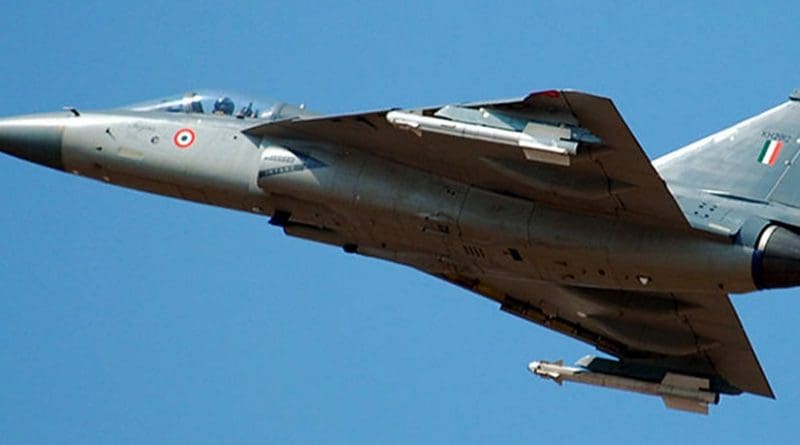Goldfein’s Visit And IAF-USAF Affiliation – Analysis
By IPCS
By Murli Menon*
US Air Force (USAF) Chief Gen David L Goldfein visit to India in February, along with the Pacific Air Forces (PACAF) Gen Terrence O’ Shaughnessy, was an important development indicating the US’ interest in greater operational association between the Indian Air Force (IAF) and USAF. Considering the significant contribution Indian purchases from the US would make to sustain and promote the US military industrial complex, the ambit of IAF-USAF affiliation would throw up significant opportunity for Indian strategic enhancement.
The virtual absence of viable US aircraft in India’s stable since the days of Fairchild Packets and Dakotas has been compensated somewhat in the past few years with the induction of the C-130J and C-17 for the IAF and other technologies such as the P-8 Poseidon for the Indian Navy and gun locating radars for the Indian Army. F-16s, F-18s and now possibly even the F-35A seem to be knocking on the doors. Even with the induction of the Rafale in a few years from now, if the US has its way and depending on actual numbers procured, the IAF could end up with around 20-30 per cent of US military hardware in its total inventory.
There is no gainsaying how US military and State Department officials go out of their way to promote the interests of US defence manufacturers. The all-out efforts to promote the F-16 sale to India to revive a troubled Lockheed Martin facility being relocated to South Carolina from Texas is a case-in-point. Lockheed’s Texas facility will now switch to F-35 production, which again is on the offer list to India. The optics of the USAF Chiefs visit is also significant. His jaunt at Jodhpur in the LCA shows how far the relationship has progressed from the early troublesome days, when Control Law inputs from F-16XL delayed the LCA project during the sanctions era.
In addition, the PR narrative about both air chiefs having been pioneers in evolving air tactics in Kargil and Kosovo, respectively, has more than what meets the eye. The Kosovo and Kargil Air campaigns were operationally as different as chalk and cheese. Kosovo was an illustration of air power’s argued ability to go it alone on the battlefield (not to forget the much touted vulnerability of the stealthy F-117A to conventional air defence sensors), and Kargil was a different ball game altogether of air targeting at rarified high altitude battle zones. The US was clearly signalling a interest in operational cooperation between the USAF and IAF.
Affiliation between the two air forces has been tardy at best. Some cooperation such as Exercise Shiksha in the eastern theatre and F-86 Sabre flying training for young IAF fighter pilots led to a long period of acceptance of each other’s roles during 1971 and thereafter all along till the bilateral warming post the Soviet collapse. Now the two air forces compete at the renowned Red Flag fly off in Alaska with useful affiliations in electronic warfare, AWACS and Flight Air Refuelling a. Once these exercises are truly integrated into operational plans, both countries would gain in achieving individual and combined war objectives. There has already been an IAF-USAF flying instructor exchange. A ‘Top Gun’ exchange could also materialise in the near future.
Where India should be looking for synergy with the USAF is in counter-terror targeting and strategic targeting. US assets, for example, in West Asia, Diego Garcia, and the PACAF could integrate usefully with the IAF wherewithal, be it for air operations in the South China Sea or even targeting proclaimed international terror entities in India’s neighbourhood. Aerial neutralisation if Pakistan’s nuclear assets fall into jihadi hands could also be foreseeable. It is a little known fact that India turned down an Israeli proposal in the early eighties to target Kahuta (before it turned critical) after staging through Indian air space and air bases. Much water has flowed since and the present dispensations may not be averse to such missions, especially as counter terror has become a zero acceptance priority for the comity of nations.
What India should carefully negotiate is the apparent strategic discordance in operations against countries such as Russia and Iran. India’s political leadership would have to be tread a cautious line to protect national interests. Turkey launching air operations against the Kurdish militias in Syria, whilst being a full-fledged NATO ally, may be a useful pointer here. The India-Pakistan scenario could be a cause for concern in this regard. US affinity for Pakistan would take a while to tilt substantially in India’s favour. Even with a UN sanction and their own bounty of US$ 10 million on his head, the US has been fighting shy of targeting Hafiz Saeed.
Air power has proved itself in achieving national political goals by means of accurate operational targeting. India’s political and military leadership must think through the strategic advantages of hitching their bandwagon with that of the US, scenario-wise as well as adopting a meaningful “What is in it for us?” approach. The newly proposed strategic Quadrilateral between India, US, Australia and Japan will have an air component as well. Therefore, too, the need to exercise with the Japanese and Australian air forces considering future targeting requirements.
* Murli Menon
Former Group Captain, Indian Air Force

